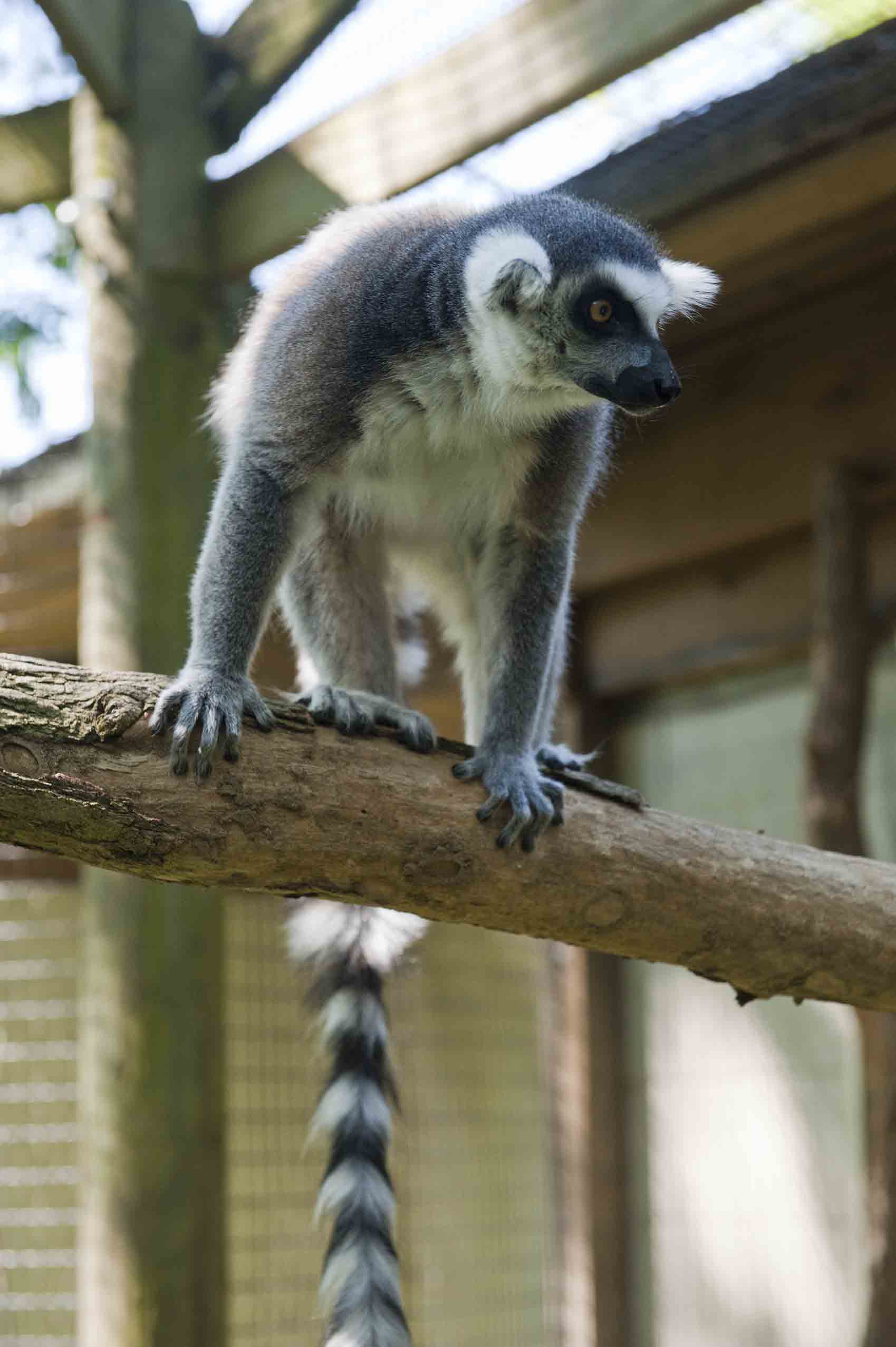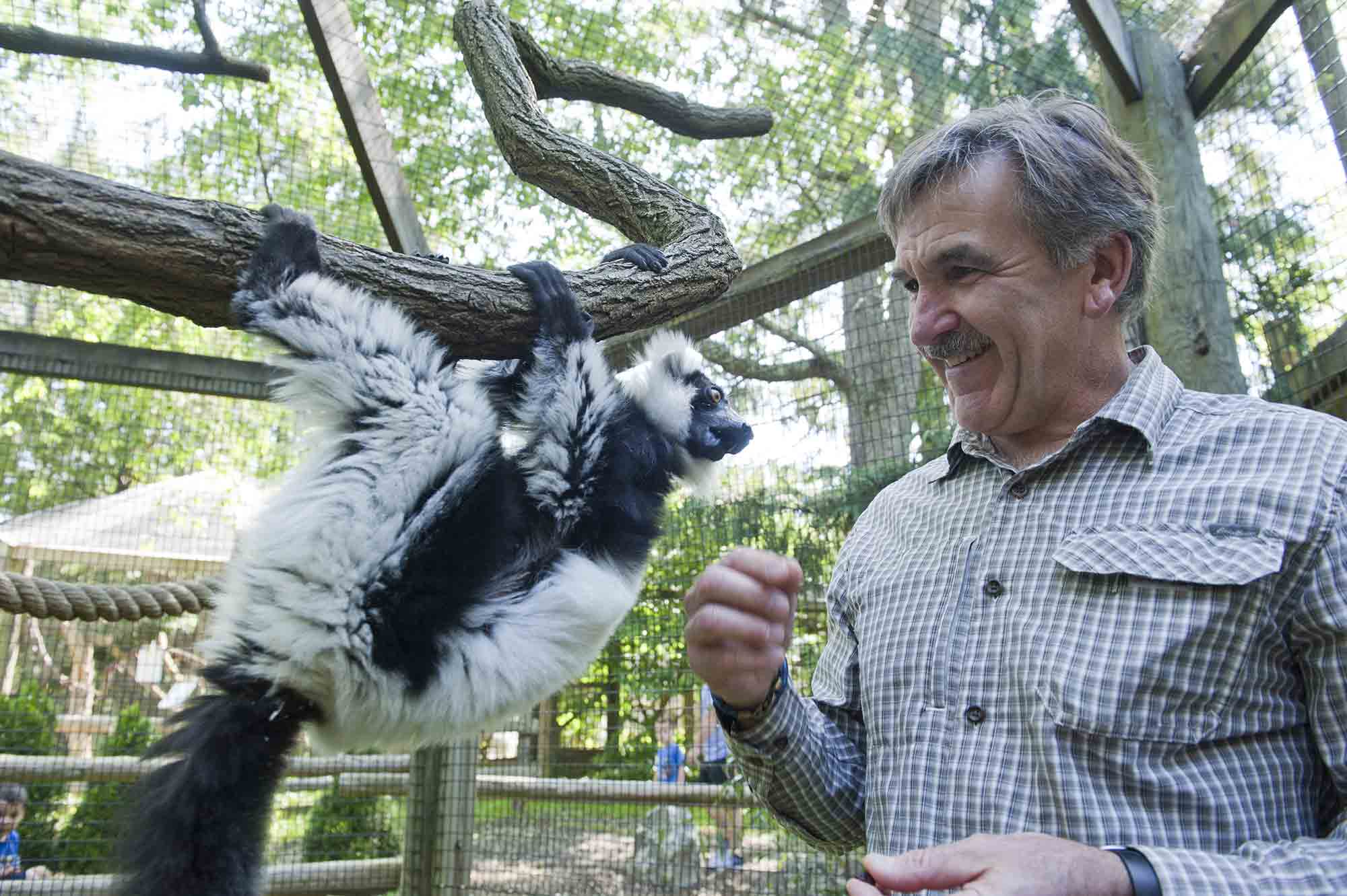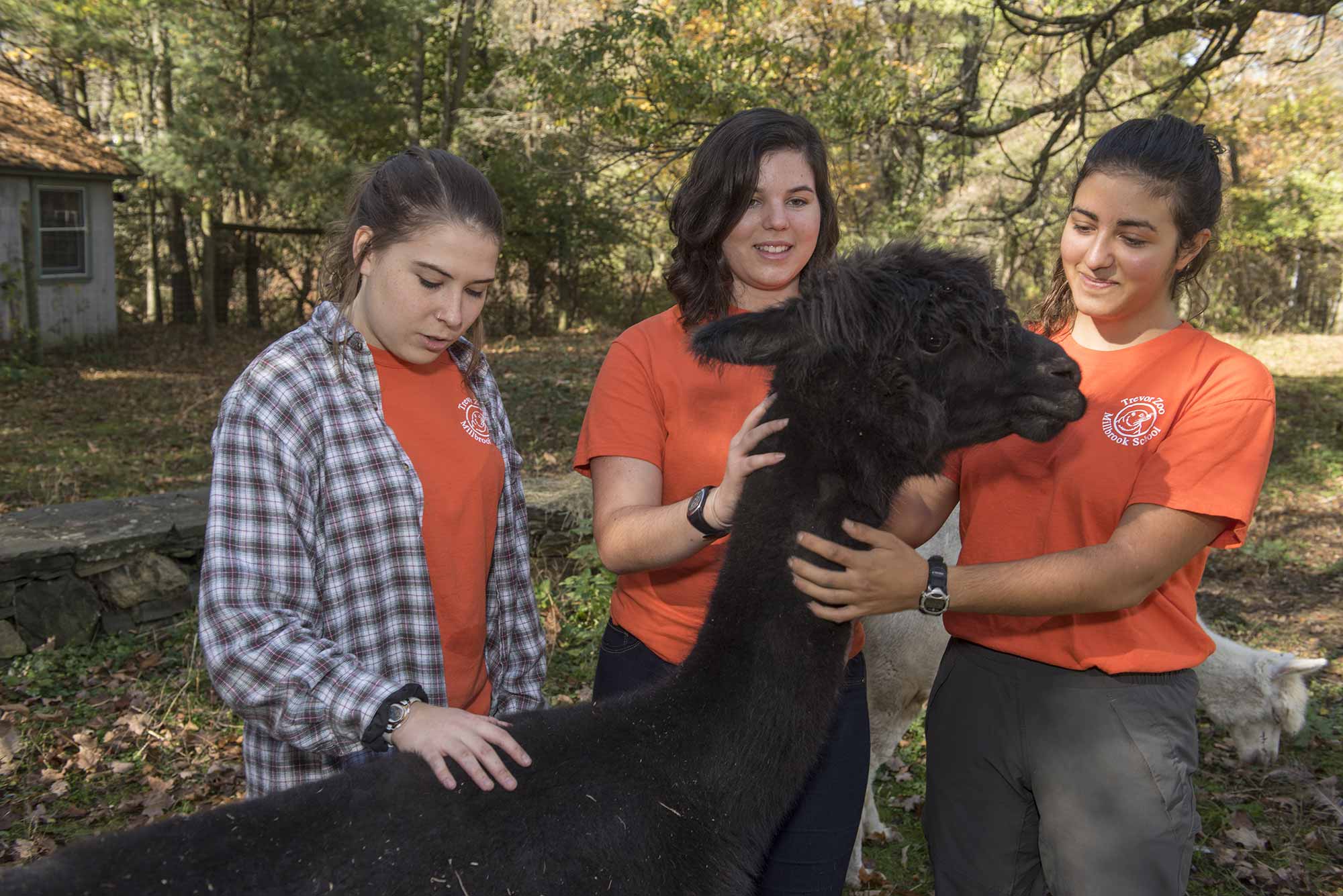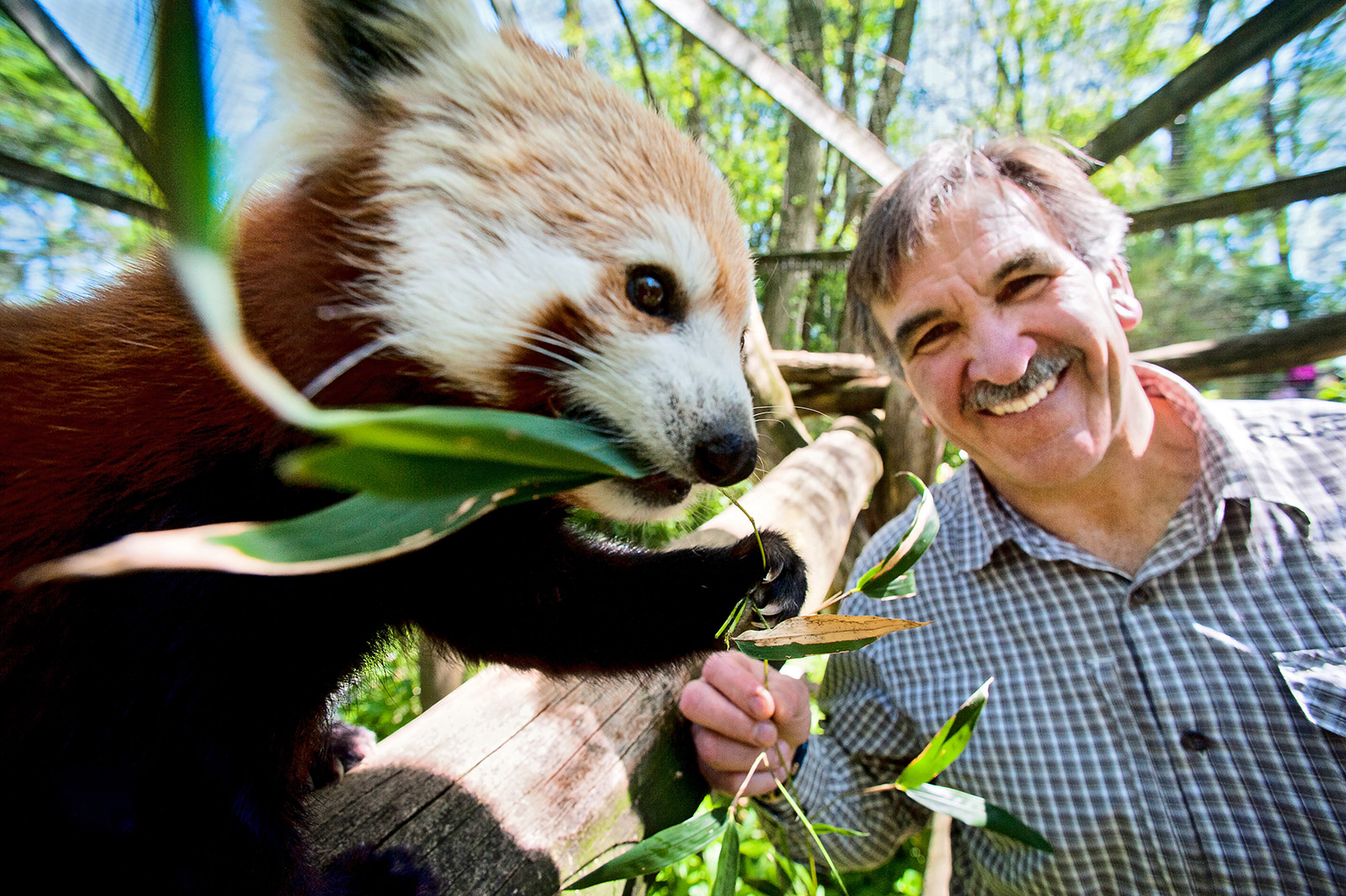Nestled in the rolling hills and endless stretches of farmland just beyond the quaint village of Millbrook, NY—a mere 30 minute drive from Vassar—lies a peaceful habitat for more than 80 species of wildlife from around the globe. Truly one of a kind, the Trevor Zoo at Millbrook School is the only Association of Zoos and Aquariums-accredited zoo in the nation that is owned and operated by a high school.
This unique residence for exotic and indigenous animals is where Alan Tousignant ’84 began his career in zoology and conservation as an intern. Now, more than 30 years later, he serves as its director.
Tousignant arrived at Vassar from his hometown near Plattsburgh, NY, ready to study biology and apply to a veterinary program. He’s been involved with animals his entire life. “I grew up milking cows on a dairy farm, and I got to know a lot about animals and agriculture,” he says.
Despite his passion for the veterinary field, he “didn’t fare well” in the required mathematics and had to give up that dream. During a fieldwork experience, however, he learned about an opening for an internship at the Millbrook School’s Trevor Zoo. He landed the position, and after one year became the assistant director. After pursuing a doctorate in zoology and animal biology at the University of Texas at Austin, he returned as associate director.
His work at the zoo has sparked a lifelong interest and career in exhibiting exotic animals and working with others in the field of conservation.

“Over the last 40 years, the role of zoos in promoting and advocating for conservation has expanded tremendously, and that’s our main focus now,” he says. Animals are a “wonderful hook” to get students and visitors to learn about the natural environment, he adds.
Millbrook School is a coed, private boarding school for students in grades 9 through 12. The Trevor Zoo, established in 1936, is, for many of them, the very reason they enrolled. It’s also a perfect venue to earn the school’s required community service credits.
Tousignant serves as an educator and mentor, interacting daily with student volunteers and those who take the animal behavior elective he teaches in the classroom and in the neighboring wetlands and forests. An avid runner, he also headed up the school’s cross country and track team for many years.
The Trevor Zoo is small compared to many well-known zoos, such as the Bronx Zoo or Chicago’s Lincoln Park Zoo. As a consequence, he says, “We all wear a lot of hats.” But the diversity of tasks on the job is precisely what’s kept him around for all these years. The role of administrator—helping to shape the big-picture mission and goals for the institution—comes easily to Tousignant, but he says he appreciates the hands-on time he spends working with the animals and designing exhibits.

“Nobody goes into the zoo field to sit at a desk and write grants and mission statements. They are the guts of the job you have to do so you can play with the animals.” – Alan Tousignant ’84
On the job, every day is different. He might begin his morning meeting with the school’s headmaster, then teach a class. “I might work with students on the community service program after that, or meet with a vet about an animal issue,” he says.
Tousignant also devotes time to reviewing the zoo’s animal collection. Because the zoo is part of a high school, its animals have to be selected with safety in mind. The zoo houses several endangered species, including red pandas—one of the most popular residents—and many others, such as red wolves, bobcats, emus, alpacas, deer, turkeys, parrots, vultures, and large snakes. But there are no lions, tigers, or bears whose care presents too high a risk.
“We are now evaluating whether we can accommodate bald eagles,” he says, explaining that the species’ population has grown and, as a result, there are now more birds getting injured from car and boat strikes.
“There are agencies looking for places to house animals that have been permanently injured,” he says. So Tousignant is engaging his students in investigating what a bald eagle exhibit would entail.
Working with students and witnessing the impact of the zoo program on their early learning experiences has been inspiring to Tousignant, who says the value of an on-campus zoo creates many opportunities to capture students’ imaginations and spark their curiosity about science and conservation.

He recalled one student who was recently assigned a work detail at the zoo as a consequence for a minor disciplinary infraction.
This student would put in his time and go back to campus…until Tousignant took him on an errand to a local farm to pick up hay.
“We talked about everything, from baseball to why we were picking up hay, to what goes into making a bale of hay, to how much it costs and why the animals need it. He left that day and I thought, ‘end of story.’”
Shortly after, the school’s arts director, who ran a playwriting class, informed Tousignant that the student had written a play about his work detail and Tousignant was in it.
Judging by the script, it was clear that the young man truly appreciated the experience. But more importantly, Tousignant says, he noticed a drastic change in his attitude and demeanor. “He is an entirely different student.”
“With these early experiences, [students] can go on to have a real impact on the world.” One living, breathing example is Millbrook alumnus Thomas Lovejoy, PhD, today a senior fellow at the United Nations Foundation and a professor of environmental science and policy at George Mason University in Virginia. Lovejoy’s experience working at the Trevor Zoo during high school inspired a lifelong career dedicated to conservation. He has advised presidents, served as the World Bank’s chief biodiversity officer, and directed a program for the World Wildlife Fund.
Tousignant, meanwhile, has been addressing the biodiversity issues more locally, hoping to also inspire his students to consider science and conservation as they plan for their future careers.
Though his profession can be quite isolating, Tousignant stays connected to colleagues in the field through professional associations. He has presented and published scientific research in quite a few academic journals, much of it focused on reptile behavior and reproduction. He is currently conducting research on two species of turtles and the influence humanity has on skewing genders among their populations.
This year, the New York Chapter of the Wildlife Society named him Outstanding Conservationist of the Year.

